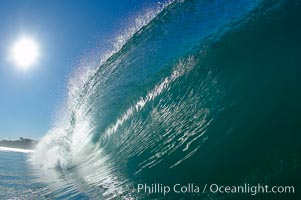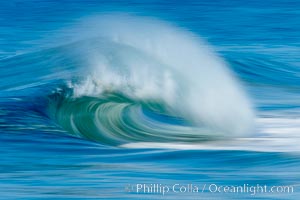
Breaking wave, fast motion and blur, The Wedge.
Location: The Wedge, Newport Beach, California
Image ID: 14355
Location: The Wedge, Newport Beach, California
Image ID: 14355
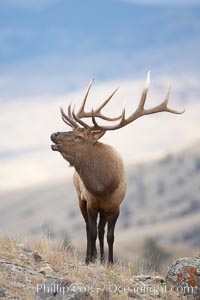
Male elk bugling during the fall rut. Large male elk are known as bulls. Male elk have large antlers which are shed each year. Male elk engage in competitive mating behaviors during the rut, including posturing, antler wrestling and bugling, a loud series of screams which is intended to establish dominance over other males and attract females.
Species: Elk, Cervus canadensis
Location: Mammoth Hot Springs, Yellowstone National Park, Wyoming
Image ID: 19693
Species: Elk, Cervus canadensis
Location: Mammoth Hot Springs, Yellowstone National Park, Wyoming
Image ID: 19693
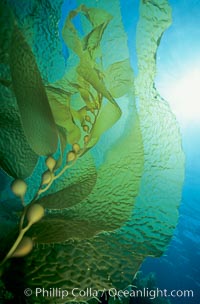
Kelp frond showing pneumatocysts.
Species: Giant kelp, Macrocystis pyrifera
Location: San Clemente Island, California
Image ID: 00627
Species: Giant kelp, Macrocystis pyrifera
Location: San Clemente Island, California
Image ID: 00627
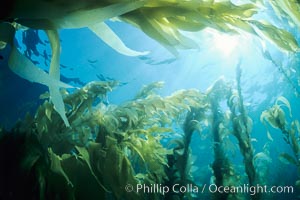
A kelp forest, with sunbeams passing through kelp fronds. Giant kelp, the fastest growing plant on Earth, reaches from the rocky bottom to the ocean's surface like a submarine forest.
Species: Giant kelp, Macrocystis pyrifera
Location: San Clemente Island, California
Image ID: 02411
Species: Giant kelp, Macrocystis pyrifera
Location: San Clemente Island, California
Image ID: 02411
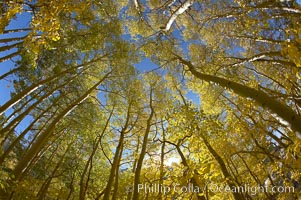
Aspen trees display Eastern Sierra fall colors, Lake Sabrina, Bishop Creek Canyon.
Species: Aspen, Populus tremuloides
Location: Bishop Creek Canyon, Sierra Nevada Mountains, California
Image ID: 17547
Species: Aspen, Populus tremuloides
Location: Bishop Creek Canyon, Sierra Nevada Mountains, California
Image ID: 17547
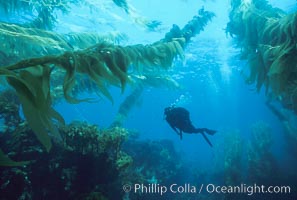
A SCUBA diver swims through a giant kelp forest which is tilted back by strong ocean currents. Giant kelp, the fastest plant on Earth, reaches from the rocky bottom to the ocean's surface like a submarine forest.
Species: Giant kelp, Macrocystis pyrifera
Location: San Clemente Island, California
Image ID: 01107
Species: Giant kelp, Macrocystis pyrifera
Location: San Clemente Island, California
Image ID: 01107
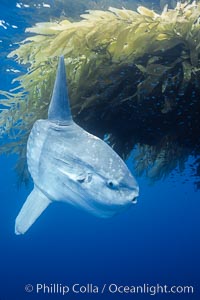
Ocean sunfish recruiting fish near drift kelp to clean parasites, open ocean, Baja California.
Species: Ocean sunfish, Mola mola
Image ID: 03267
Species: Ocean sunfish, Mola mola
Image ID: 03267
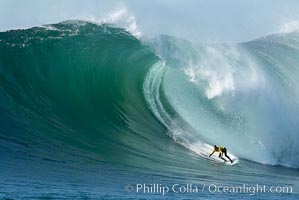
2006 Mavericks surf contest champion Grant Twiggy Baker of South Africa. Final round, Mavericks surf contest, February 7, 2006.
Location: Mavericks, Half Moon Bay, California
Image ID: 15299
Location: Mavericks, Half Moon Bay, California
Image ID: 15299
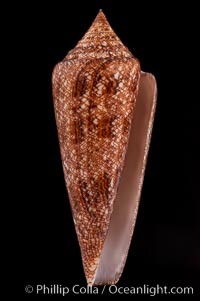
Glory of the Sea cone shell, brown form. The Glory of the Sea cone shell, once one of the rarest and most sought after of all seashells, remains the most famous and one of the most desireable shells for modern collectors.
Species: Glory of the seas cone, Conus gloriamaris
Image ID: 08732
Species: Glory of the seas cone, Conus gloriamaris
Image ID: 08732
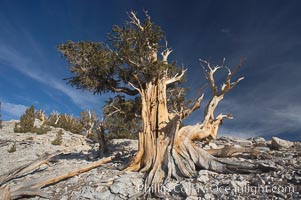
Bristlecone pine displays its characteristic gnarled, twisted form as it rises above the arid, dolomite-rich slopes of the White Mountains at 11000-foot elevation. Patriarch Grove, Ancient Bristlecone Pine Forest.
Species: Bristlecone Pine, Pinus longaeva
Location: White Mountains, Inyo National Forest, California
Image ID: 17475
Species: Bristlecone Pine, Pinus longaeva
Location: White Mountains, Inyo National Forest, California
Image ID: 17475
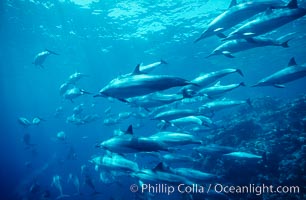
Hawaiian spinner dolphin, resting herd swimming along reef.
Species: Hawaiian spinner dolphin, Stenella longirostris
Location: Lanai, Hawaii
Image ID: 00108
Species: Hawaiian spinner dolphin, Stenella longirostris
Location: Lanai, Hawaii
Image ID: 00108
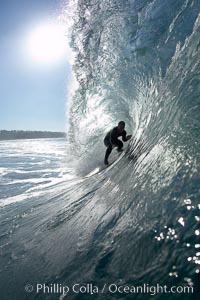
Carson Smith, Ponto, South Carlsbad, morning surf.
Location: Ponto, Carlsbad, California
Image ID: 17828
Location: Ponto, Carlsbad, California
Image ID: 17828
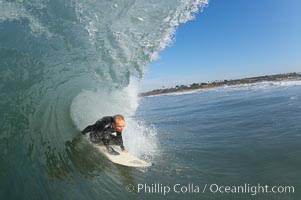
Don Gaunder, Ponto, South Carlsbad, morning surf.
Location: Ponto, Carlsbad, California
Image ID: 17855
Location: Ponto, Carlsbad, California
Image ID: 17855
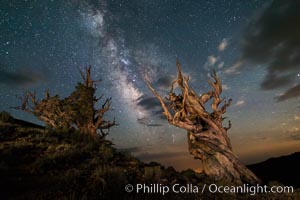
Stars and the Milky Way over ancient bristlecone pine trees, in the White Mountains at an elevation of 10,000' above sea level. These are some of the oldest trees in the world, some exceeding 4000 years in age.
Species: Bristlecone pine, Pinus longaeva
Location: Ancient Bristlecone Pine Forest, White Mountains, Inyo National Forest, California
Image ID: 29407
Species: Bristlecone pine, Pinus longaeva
Location: Ancient Bristlecone Pine Forest, White Mountains, Inyo National Forest, California
Image ID: 29407

Ancient Douglas fir trees in Cathedral Grove. Cathedral Grove is home to huge, ancient, old-growth Douglas fir trees. About 300 years ago a fire killed most of the trees in this grove, but a small number of trees survived and were the originators of what is now Cathedral Grove. Western redcedar trees grow in adundance in the understory below the taller Douglas fir trees.
Species: Douglas fir tree, Pseudotsuga menziesii
Location: Cathedral Grove, MacMillan Provincial Park, Vancouver Island, British Columbia, Canada
Image ID: 22456
Panorama dimensions: 9702 x 3043
Species: Douglas fir tree, Pseudotsuga menziesii
Location: Cathedral Grove, MacMillan Provincial Park, Vancouver Island, British Columbia, Canada
Image ID: 22456
Panorama dimensions: 9702 x 3043
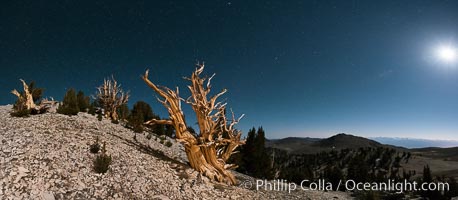
Ancient bristlecone pine trees at night, under a clear night sky full of stars, lit by a full moon, near Patriarch Grove.
Species: Ancient bristlecone pine, Pinus longaeva
Location: White Mountains, Inyo National Forest, California
Image ID: 28533
Panorama dimensions: 5144 x 11788
Species: Ancient bristlecone pine, Pinus longaeva
Location: White Mountains, Inyo National Forest, California
Image ID: 28533
Panorama dimensions: 5144 x 11788
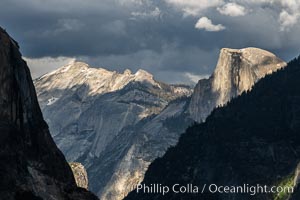
Half Dome and Clouds Rest, Sunset, Yosemite National Park.
Location: Yosemite National Park, California
Image ID: 34541
Location: Yosemite National Park, California
Image ID: 34541
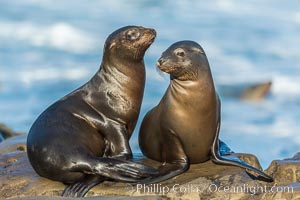
Double side-eye from two young California sea lions resting on a reef in La Jolla.
Species: California sea lion, Zalophus californianus
Location: La Jolla, California
Image ID: 34273
Species: California sea lion, Zalophus californianus
Location: La Jolla, California
Image ID: 34273
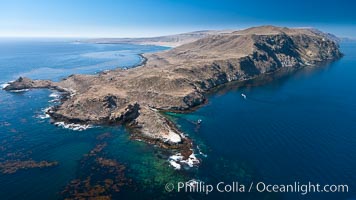
San Clemente Island Pyramid Head, the distinctive pyramid shaped southern end of the island. San Clemente Island Pyramid Head, showing geologic terracing, underwater reefs and giant kelp forests.
Location: San Clemente Island, California
Image ID: 26003
Location: San Clemente Island, California
Image ID: 26003
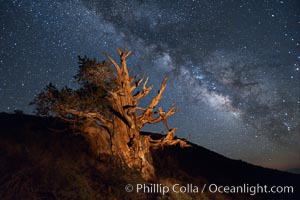
Stars and the Milky Way rise above ancient bristlecone pine trees, in the White Mountains at an elevation of 10,000' above sea level. These are some of the oldest trees in the world, reaching 4000 years in age.
Species: Bristlecone pine, Pinus longaeva
Location: Ancient Bristlecone Pine Forest, White Mountains, Inyo National Forest, California
Image ID: 27772
Species: Bristlecone pine, Pinus longaeva
Location: Ancient Bristlecone Pine Forest, White Mountains, Inyo National Forest, California
Image ID: 27772
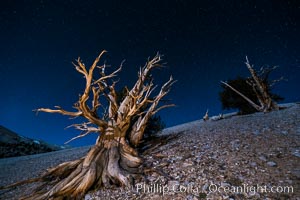
Ancient bristlecone pine trees at night, under a clear night sky full of stars, lit by a full moon, near Patriarch Grove.
Species: Ancient bristlecone pine, Pinus longaeva
Location: White Mountains, Inyo National Forest, California
Image ID: 28535
Species: Ancient bristlecone pine, Pinus longaeva
Location: White Mountains, Inyo National Forest, California
Image ID: 28535
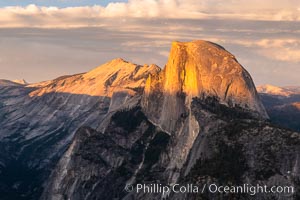
Sunset light on Half Dome and Clouds Rest, Yosemite National Park.
Location: Yosemite National Park, California
Image ID: 36397
Location: Yosemite National Park, California
Image ID: 36397
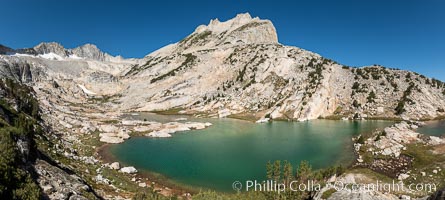
North Peak (12,242') rises over lower Conness Lake, its water colored deep blue-green by glacier runoff. Mount Conness (12,589') towers in the upper left. Hoover Wilderness, Inyo National Forest.
Location: Conness Lakes Basin, Hoover Wilderness, California
Image ID: 36427
Panorama dimensions: 7008 x 15585
Location: Conness Lakes Basin, Hoover Wilderness, California
Image ID: 36427
Panorama dimensions: 7008 x 15585
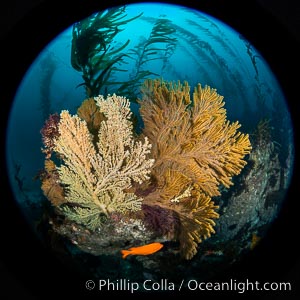
Parasitic zoanthid anemones cover, encrust and overwhelm a golden gorgonian. The gorgonian on the left has been completely parasitized by zoanthid anemones, while the gorgonian to the right remains free of zoanthids (for now). A garibaldi swims below the two sea fans. The golden gorgonian is a filter-feeding temperate colonial species that lives on the rocky bottom at depths between 50 to 200 feet deep. Each individual polyp is a distinct animal, together they secrete calcium that forms the structure of the colony. Gorgonians are oriented at right angles to prevailing water currents to capture plankton drifting by.
Species: California golden gorgonian, Luminescent parazoanthid, Zoanthid anemone, Giant kelp, Muricea californica, Parazoanthus lucificum, Savalia lucifica, Macrocystis pyrifera
Location: San Clemente Island, California
Image ID: 38493
Species: California golden gorgonian, Luminescent parazoanthid, Zoanthid anemone, Giant kelp, Muricea californica, Parazoanthus lucificum, Savalia lucifica, Macrocystis pyrifera
Location: San Clemente Island, California
Image ID: 38493
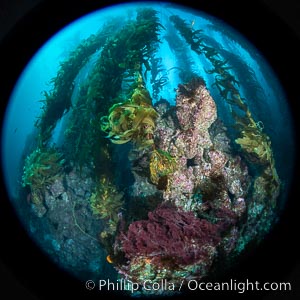
The Kelp Forest and Rocky Reef of San Clemente Island. Giant kelp grows rapidly, up to 2' per day, from the rocky reef on the ocean bottom to which it is anchored, toward the ocean surface where it spreads to form a thick canopy. Myriad species of fishes, mammals and invertebrates form a rich community in the kelp forest. Lush forests of kelp are found throughout California's Southern Channel Islands.
Species: Giant kelp, Macrocystis pyrifera
Location: San Clemente Island, California
Image ID: 38494
Species: Giant kelp, Macrocystis pyrifera
Location: San Clemente Island, California
Image ID: 38494
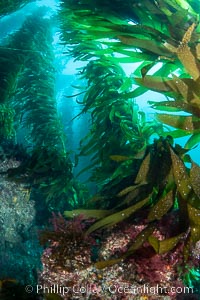
The Kelp Forest and Rocky Reef of San Clemente Island. Giant kelp grows rapidly, up to 2' per day, from the rocky reef on the ocean bottom to which it is anchored, toward the ocean surface where it spreads to form a thick canopy. Myriad species of fishes, mammals and invertebrates form a rich community in the kelp forest. Lush forests of kelp are found throughout California's Southern Channel Islands.
Species: Giant kelp, Macrocystis pyrifera
Location: San Clemente Island, California
Image ID: 38495
Species: Giant kelp, Macrocystis pyrifera
Location: San Clemente Island, California
Image ID: 38495
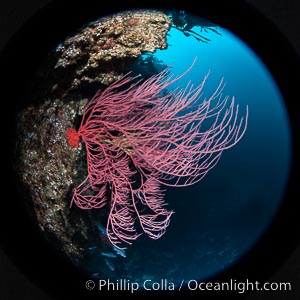
Red gorgonian on rocky reef, below kelp forest, underwater. The red gorgonian is a filter-feeding temperate colonial species that lives on the rocky bottom at depths between 50 to 200 feet deep. Gorgonians are typically oriented at right angles to prevailing water currents to capture plankton drifting by.
Species: Red gorgonian, Leptogorgia chilensis, Lophogorgia chilensis
Location: San Clemente Island, California
Image ID: 38496
Species: Red gorgonian, Leptogorgia chilensis, Lophogorgia chilensis
Location: San Clemente Island, California
Image ID: 38496
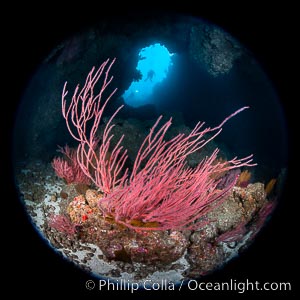
Red Gorgonians form a lush colorful garden below a submarine arch, while two scuba divers pass through the opening to the cavern.
Species: Red gorgonian, Leptogorgia chilensis, Lophogorgia chilensis
Location: San Clemente Island, California
Image ID: 38497
Species: Red gorgonian, Leptogorgia chilensis, Lophogorgia chilensis
Location: San Clemente Island, California
Image ID: 38497
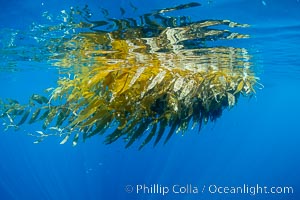
Drift kelp paddy floating on the ocean surface, San Diego.
Species: Giant kelp, Macrocystis pyrifera
Location: San Diego, California
Image ID: 38533
Species: Giant kelp, Macrocystis pyrifera
Location: San Diego, California
Image ID: 38533
